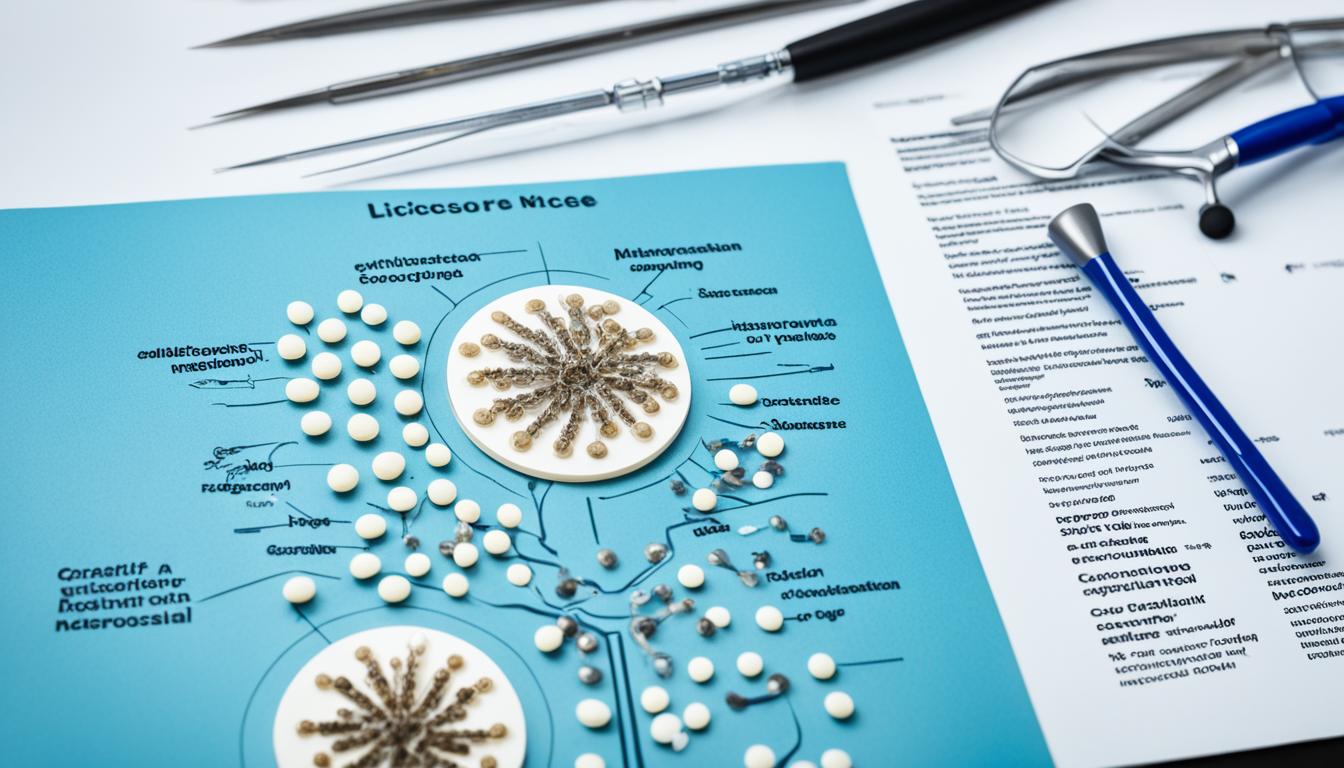Lice disease, also known as pediculosis, is a problem where the scalp and body get infested by Pediculus humanus. It commonly happens in children and leads to itching. Although it’s rare, lice can sometimes cause anemia by making people lose blood. Signs of lice include itching, a feeling like something is moving on your head or neck, small red bumps, finding lice or their eggs (nits) on hair, and trouble sleeping. It’s key to diagnose it right so the right treatment can begin.
Over-the-counter and prescription drugs are the usual ways to treat lice. But, a new method, stem cell therapy, might also work. This advanced treatment can repair the scalp and help with hair growth. Stem cell therapy for lice is an option in Thailand. It might be a hope for those who didn’t get better with regular treatments.
Key Takeaways:
- Lice disease, or pediculosis, is a parasitic issue mostly found in children. It causes itching and discomfort.
- Signs of lice include itching, red bumps, having lice or nits in hair, and trouble sleeping.
- Getting the right diagnosis is important for the best treatment.
- The common treatments are drugs you can buy at the store or prescriptions.
- Stem cell therapy is a modern way to treat lice. It can fix scalp damage and help new hair grow.
Causes and Diagnosis of Lice Infestation
Lice infestation happens when you touch the hair of someone who’s infected. It’s most common in kids who share close spaces like schools or daycare. Lice don’t have wings to fly, but they move fast by crawling. This makes it simple for them to spread between people. Being unclean does not make you more likely to get lice.
To know if someone has lice, experts look for live lice or nits in the hair. Using a magnifying glass and a strong light helps find them. Lice eggs stick closely to the hair and can be confused with dandruff. You can tell the difference by scraping with a nail. If the nits are close to the scalp, the lice are probably active. It’s important to be sure about lice before treating them, though.
To learn how to spot lice and nits accurately, check the table below:
| Lice Infestation Identification | Characteristics |
|---|---|
| Live Lice | Visible movement on the scalp and hair. Lice are small, flat, and wingless. |
| Lice Eggs (Nits) | Firmly attached to the hair shafts, usually close to the scalp. Nits are oval-shaped and often yellowish-white. |
Traditional Treatments for Lice Infestation
Dealing with lice can be frustrating, but there are well-known traditional treatments. These methods have been effective over the years in getting rid of both lice and their eggs. Here, we’ll take a closer look at these options.
Lice Shampoos
Lice shampoos are widely used for lice problems. Brands like Nix, Sklice, and Rid have chemicals that zap lice and nits. You can buy them without a prescription for at-home use. But, be sure to read and follow the directions carefully for the best results. Over time, some lice have become immune to these chemicals. If shampoos don’t work, talking with a doctor or nurse for other steps is a good idea.
Lice Removal Kit
Another way to deal with lice is a lice removal kit. This kit usually has a special comb for lice and eggs. It’s best to use the comb on wet hair. Keep combing a few times a week to make sure all lice are gone. Also, make sure to clean well anything that touches hair to prevent lice from coming back.
Summary Table – Traditional Treatments for Lice Infestation
| Treatment Option | Description |
|---|---|
| Lice Shampoos | Over-the-counter shampoos containing pediculicides to kill lice and nits |
| Lice Removal Kit | Includes a fine-toothed comb for removing lice and nits from the hair |
These treatments are good at clearing lice. Remember, stopping lice is better than dealing with them again. Teach kids the importance of staying clean and not sharing personal items to lower the chances of getting lice. If usual treatments don’t work, exploring advanced options like stem cell therapy might be necessary, which we will look at next.
Stem Cell Therapy for Lice Infestation
Stem cell therapy is a new and advanced way to treat lice infestation. It gives hope to those not helped by usual methods. This treatment uses stem cells to repair the scalp and grow new hair.
The process includes injecting stem cells into the scalp’s damaged parts. There, they help repair and renew the tissue. It’s a gentle method that could offer a lasting answer to lice problems.
In Thailand, there are advanced medical centers and highly skilled doctors who provide this therapy. They help patients learn about and access this treatment. This support offers hope for people tired of dealing with lice issues.

